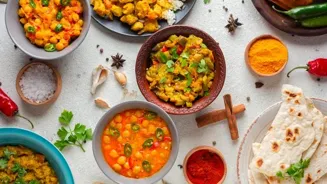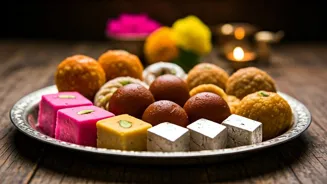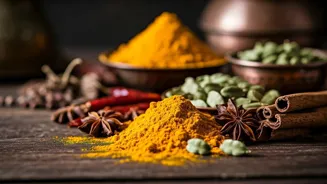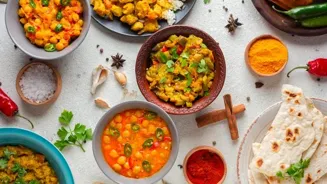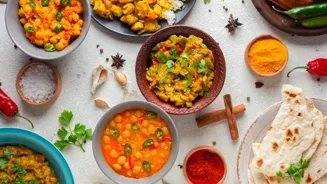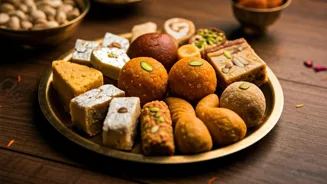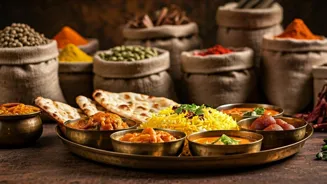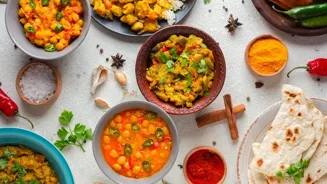Explore the vibrant world of Indian festivals & their culinary traditions. Dive into the cultural significance of food!
India, a land of vibrant colours, diverse cultures, and a rich history, celebrates
numerous festivals throughout the year. These festivals are not just occasions for prayers and rituals; they are also a celebration of food, with each festival having its own unique culinary traditions.
Food in Indian festivals is not merely sustenance; it's an integral part of the celebrations, carrying deep cultural, religious, and social significance.
The preparation, offering, and sharing of food during festivals strengthens community bonds, preserves traditions, and evokes a sense of belonging and nostalgia.
From the sweets that symbolize joy and prosperity to the savoury dishes that represent abundance and gratitude, food plays a pivotal role in shaping the festive spirit of India.
Diwali celebrates with sweets, snacks, family bonds, and community sharing
Diwali, the festival of lights, is incomplete without its array of sweets and snacks. Laddoos, barfi, and kheer are quintessential Diwali treats, symbolizing prosperity and good fortune.
These sweets are often made with ghee, a clarified butter considered auspicious in Hinduism, and decorated with nuts and edible silver foil, adding to their richness and visual appeal.
The preparation of these sweets is often a family affair, with each member contributing their skills and expertise, strengthening familial bonds. Beyond sweets, savoury snacks like chakli, sev, and mathri are also enjoyed during Diwali, providing a balanced culinary experience.
The sharing of these festive delicacies with family, friends, and neighbours is a crucial aspect of Diwali celebrations, fostering a sense of community and goodwill.
During Diwali, houses are decorated with diyas and rangolis, and families come together to pray to Goddess Lakshmi, the goddess of wealth and prosperity. The exchange of gifts and sweets is a common tradition, symbolizing love and appreciation.
Holi celebrates with colorful food, drinks, and playful revelry
Holi, the festival of colours, is celebrated with vibrant hues and equally colourful food. Gujiya, a sweet dumpling filled with khoya and nuts, is a Holi staple in many parts of India. It represents the sweetness of the festival and the forgiveness that is central to the Holi spirit.
Thandai, a refreshing milk-based drink infused with spices and nuts, is another popular Holi beverage, offering a cooling respite from the heat and the excitement of the celebrations.
Other festive dishes include dahi bhalle, kanji vada, and various types of pakoras, providing a mix of sweet, tangy, and savoury flavours. Holi is a time for playful revelry, with people smearing each other with colours and dancing to traditional music.
The consumption of festive food and drinks is an integral part of the celebrations, adding to the joy and camaraderie. The festival celebrates the triumph of good over evil and the arrival of spring, bringing with it a sense of renewal and hope.
Navratri festival honors Goddess Durga with fasting, feasting, and rituals
Navratri, a nine-night festival dedicated to Goddess Durga, is observed with fasting and feasting. During the fast, devotees abstain from certain foods and consume sattvic meals, which are believed to purify the body and mind.
Sabudana khichdi, singhare ki puri, and kheer made with makhana are common Navratri dishes, providing nourishment and energy during the fast. On the eighth and ninth days of Navratri, Kanya Pujan is performed, where young girls are worshipped as manifestations of the goddess.
As part of the ritual, they are offered a special meal consisting of sooji halwa, kala chana, and puri, symbolizing respect and gratitude. The breaking of the fast on the tenth day, known as Dussehra, is marked with a lavish feast, celebrating the victory of good over evil.
Navratri is a time for devotion, dance, and cultural performances, with each night dedicated to a different form of Goddess Durga. The festival culminates in the burning of effigies of Ravana, symbolizing the triumph of righteousness.
Janmashtami celebration with fasting, festive food, songs, and devotion
Janmashtami, the celebration of Lord Krishna's birth, is observed with fasting and a variety of delectable offerings. Devotees often keep a fast until midnight, the time of Krishna's birth, and then break the fast with a special meal.
Makhan mishri, a combination of butter and sugar, is a favourite offering to Lord Krishna, reflecting his fondness for butter as a child. Panjiri, a sweet powder made from roasted coriander seeds, ghee, and sugar, is another common Janmashtami treat, believed to be nutritious and auspicious.
Other festive dishes include singhare atte ki barfi, aloo ki sabzi, and kheer, providing a mix of sweet and savoury flavours. Janmashtami is celebrated with devotional songs, dances, and enactments of Krishna's life, creating a festive atmosphere.
The breaking of the fast and the sharing of prasad (offerings) are essential aspects of the celebrations, signifying devotion and gratitude.
Raksha Bandhan celebrates sibling bond with sweets, rituals, and family gatherings
Raksha Bandhan, the festival celebrating the bond between siblings, is marked with a variety of sweets and snacks. Sisters tie a rakhi, a sacred thread, on their brothers' wrists, symbolizing their love and protection. In return, brothers pledge to protect their sisters and offer them gifts.
The exchange of sweets is an integral part of the Raksha Bandhan ritual, with brothers and sisters sharing their favourite delicacies. Kheer, barfi, and laddoos are common Raksha Bandhan sweets, symbolizing the sweetness of their relationship.
Savoury snacks like mathri, namakpare, and chakli are also enjoyed, providing a balanced culinary experience. Raksha Bandhan is a time for family gatherings, with siblings coming together to celebrate their bond and reminisce about childhood memories.
The festival reinforces the importance of familial relationships and the values of love, care, and protection.
Pongal festival celebrates harvest with food, gratitude, and community spirit
Pongal, a harvest festival celebrated in South India, is a celebration of nature's bounty and gratitude for a successful harvest.
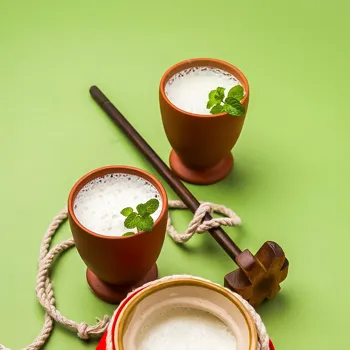
The festival is named after the traditional dish of pongal, made with rice, lentils, and jaggery, cooked in a clay pot until it overflows, symbolizing abundance and prosperity.
Ven pongal, a savoury version of pongal, is also prepared with rice, lentils, and spices, offering a contrasting flavour profile. Other festive dishes include vadai, payasam, and various vegetable preparations, providing a wholesome and delicious meal.
Pongal is celebrated with colourful decorations, traditional music and dance, and the worship of cattle, who are considered essential for agriculture.
The sharing of the festive food with family, friends, and neighbours is an important aspect of the celebrations, fostering a sense of community and gratitude. The festival marks the beginning of Uttarayan, the sun's journey northwards, and is considered an auspicious time for new beginnings.
AI Generated Content. Glance/InMobi shall have no liability for the content
